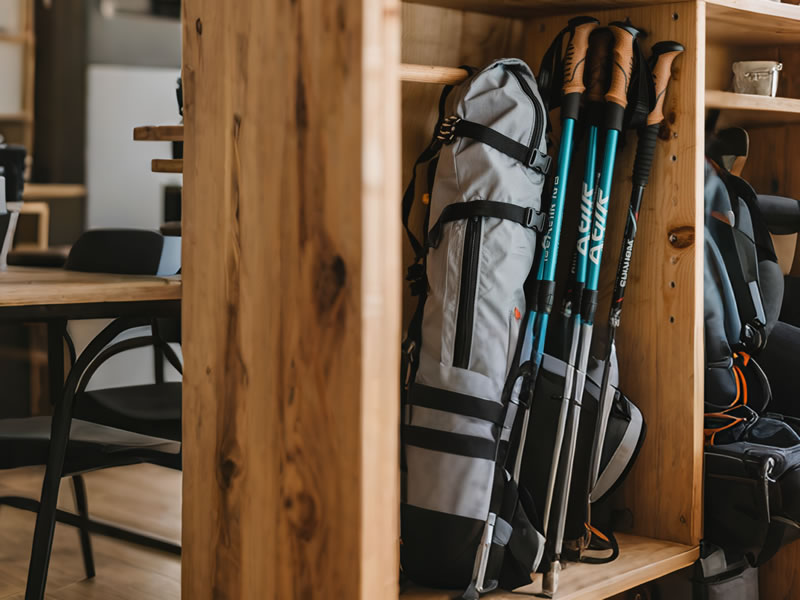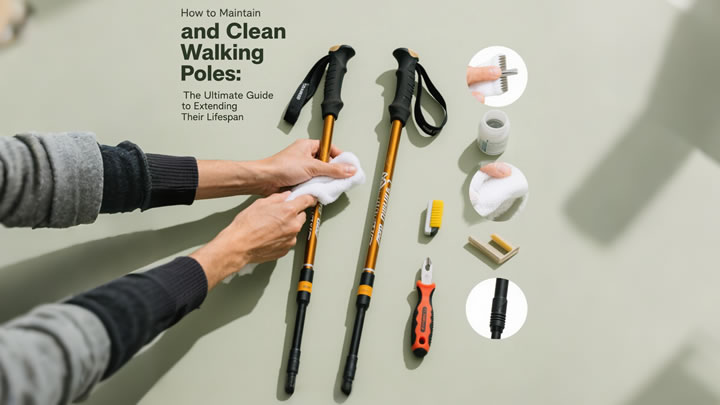How to Store Walking Poles? The Complete Guide to Preserving Your Gear's Lifespan
Proper storage of walking poles is a critical yet often overlooked aspect of gear maintenance that directly impacts their performance, reliability, and lifespan. Whether you're storing them for a week between hikes or for an entire off-season, following correct procedures will ensure your poles remain ready for action when adventure calls. This comprehensive guide covers everything from immediate post-hike care to long-term storage solutions.

The Critical Pre-Storage Cleaning Process
Never store dirty or damp poles. Moisture and trail grime are the primary enemies of your equipment, leading to corrosion, material degradation, and malfunctioning components.
- Thorough Cleaning: Start by wiping down the entire pole with a damp cloth to remove mud, dust, and salt residues. Pay special attention to the locking mechanisms, using a soft brush (an old toothbrush works perfectly) to dislodge embedded grit from flick-locks or twist-locks.
- Tip and Basket Maintenance: Remove the rubber tips and baskets if possible, cleaning any debris trapped underneath. Check carbide tips for wear and replace if necessary.
- Complete Drying: Extend all sections fully and allow the poles to air dry completely in a well-ventilated area. Avoid direct heat sources like radiators, which can damage materials and compromise adhesives.
Choosing the Ideal Storage Environment
Where you store your poles significantly affects their long-term health:
- Temperature and Humidity: Store poles in a cool, dry place with stable temperatures. Avoid damp basements, hot attics, or garages subject to extreme temperature fluctuations, which can degrade materials and promote corrosion.
- Light Exposure: Keep poles away from direct sunlight, as UV radiation can weaken synthetic materials, fade colors, and make rubber components brittle over time.
- Physical Space: Choose a location where poles won't be crushed under other gear or subject to frequent impacts.
Pole-Specific Storage Protocols
Different pole types require slightly different storage approaches:
For Telescopic (Adjustable) Poles:
- Partial Extension Method: Store poles partially extended rather than fully collapsed. This relieves constant tension on internal springs and prevents the locking mechanisms from developing a "set" or becoming stuck.
- Lock Maintenance: Loosen all locking mechanisms during storage to prevent the rubber seals and metal components from being under constant pressure, which can lead to premature wear.
- Vertical vs. Horizontal Storage: Hanging poles vertically by their handles (not straps) is ideal, as it prevents bending. If storing horizontally, ensure they're fully supported along their length and not bearing weight from other items.
For Folding (Z-Pole) Models:
- Collapsed Position: Store these poles in their fully folded state to minimize stress on the internal tension cords.
- Cord Care: Periodically check the condition of the internal cords for signs of fraying or wear, as these are critical to the pole's structural integrity.
Advanced Storage Tips for Long-Term Preservation
- Grip and Strap Care: For extended storage, consider lightly treating cork grips with a specialized conditioner to prevent drying and cracking. Ensure straps are clean and completely dry to prevent mildew.
- Metal Component Protection: A very light application of silicone-based lubricant on metal sections and locking mechanisms can provide a protective barrier against corrosion. Avoid petroleum-based products that can attract dirt.
- Tip Protection: Consider using rubber tip protectors during storage to prevent accidental damage to both the poles and other gear, and to keep the sharp carbide tips from becoming dull.
- Travel Cases: When possible, store poles in their original protective bags or cases. This provides an additional layer of protection against dust, moisture, and physical damage.
Seasonal Storage Considerations
- Winter Preparation: If you've used poles in snowy or icy conditions, pay extra attention to ensuring all components are completely dry to prevent freeze damage or corrosion from road salt residues.
- Off-Season Storage: For poles that won't be used for several months, perform a comprehensive maintenance check before storage, addressing any needed repairs so they're ready when the next hiking season arrives.
What to Avoid: Common Storage Mistakes
- Never store poles wet – this is the fastest way to ensure corrosion and permanent damage.
- Avoid hanging poles by their straps for extended periods, as this can stretch and weaken them.
- Don't leave poles tightly collapsed with locks engaged, which can compromise the locking mechanism's effectiveness.
- Never store poles near chemicals like fertilizers or pool supplies, whose fumes can accelerate material breakdown.
By implementing these storage practices, you're not just putting equipment away – you're actively preserving your investment and ensuring that your walking poles will provide reliable support for countless future adventures. Proper storage is the final, crucial step in the lifecycle of responsible gear ownership, bridging the gap between one journey's end and the next journey's beginning.






